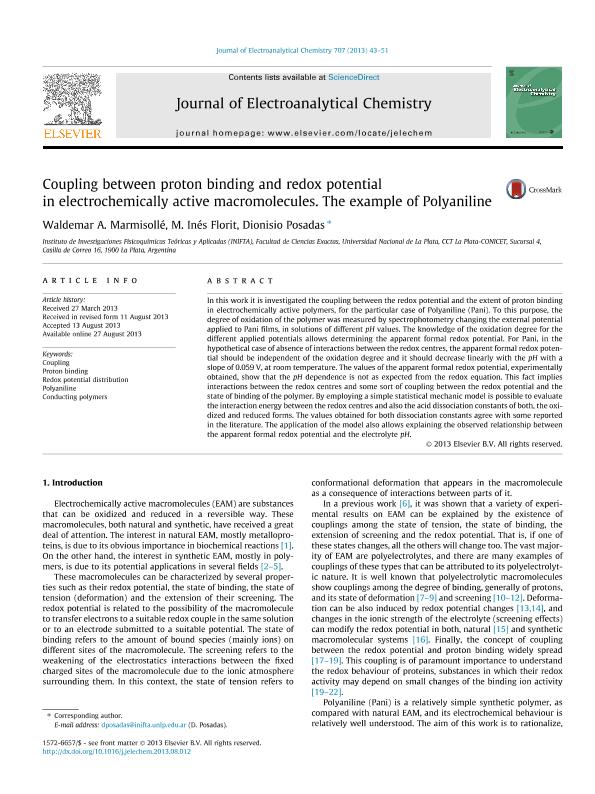Artículo
Coupling between proton binding and redox potential in electrochemically active macromolecules. the example of Polyaniline
Fecha de publicación:
15/10/2013
Editorial:
Elsevier Science Sa
Revista:
Journal of Electroanalytical Chemistry
ISSN:
0022-0728
Idioma:
Inglés
Tipo de recurso:
Artículo publicado
Clasificación temática:
Resumen
In this work it is investigated the coupling between the redox potential and the extent of proton binding in electrochemically active polymers, for the particular case of Polyaniline (Pani). To this purpose, the degree of oxidation of the polymer was measured by spectrophotometry changing the external potential applied to Pani films, in solutions of different pH values. The knowledge of the oxidation degree for the different applied potentials allows determining the apparent formal redox potential. For Pani, in the hypothetical case of absence of interactions between the redox centres, the apparent formal redox potential should be independent of the oxidation degree and it should decrease linearly with the pH with a slope of 0.059 V, at room temperature. The values of the apparent formal redox potential, experimentally obtained, show that the pH dependence is not as expected from the redox equation. This fact implies interactions between the redox centres and some sort of coupling between the redox potential and the state of binding of the polymer. By employing a simple statistical mechanic model is possible to evaluate the interaction energy between the redox centres and also the acid dissociation constants of both, the oxidized and reduced forms. The values obtained for both dissociation constants agree with some reported in the literature. The application of the model also allows explaining the observed relationship between the apparent formal redox potential and the electrolyte pH.
Archivos asociados
Licencia
Identificadores
Colecciones
Articulos(INIFTA)
Articulos de INST.DE INV.FISICOQUIMICAS TEORICAS Y APLIC.
Articulos de INST.DE INV.FISICOQUIMICAS TEORICAS Y APLIC.
Citación
Marmisollé, Waldemar Alejandro; Florit, Maria Ines; Posadas, Dionisio; Coupling between proton binding and redox potential in electrochemically active macromolecules. the example of Polyaniline; Elsevier Science Sa; Journal of Electroanalytical Chemistry; 707; 15-10-2013; 43-51
Compartir
Altmétricas




